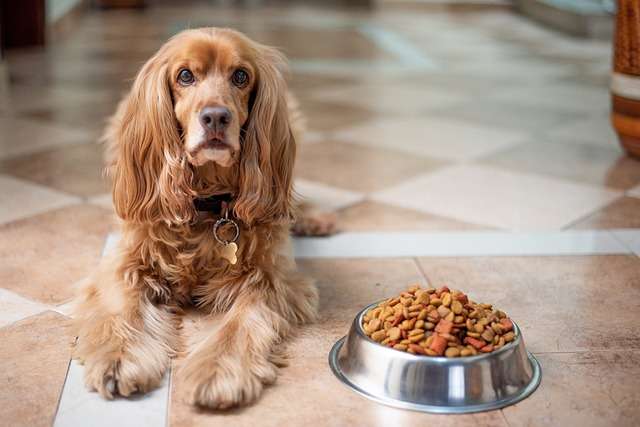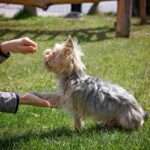Are you a confused owner? I mean, are you stuck between the terms Positive Reinforcements and Negative Reinforcements? Don’t worry. You have come to the right spot. I am a dog owner and a member of a renowned pet care organization.
Today, I will share my experiences with Positive Reinforcement and Negative Reinforcement and the specific methods I have used with my furry friends, depending on the situation. Let’s Dive deep.
Positive Reinforcements
In simple words, you are rewarding your dog while compiling a specific task you have given. This encourages dogs to repeat the action or behaviors when you provide the commands.
When to Use Positive Reinforcements?
Positive reinforcement is recommended for obedience training and pee-potty training. All owners need to train their dogs to match their personalities. To remain well-behaved, dogs need to learn and obey commands such as “Sit,” “Stop,” “Eat,” “Come,” “Down,” and “Leave.” These commands can be easily trained through positive reinforcements.
My Experience with Obedience training
I have given obedience training to all my furry friends. I spent most of my time with Shiloh Shepherds, Chihuahuas, Golden Mountain Doodles, and Cavapoo. Followed a basic rule: When I give any commands and see that my furry friend is doing them perfectly, I immediately provide treats through verbal praises and dog treats. That makes my furry friend understand that he did an excellent job, and afterward, whenever I give the command, he immediately responds to it and earns a treat.
My Experience in Pee-Potty Training
The same goes for the pee-potty training. From the first day at home, I take them out immediately after feeding them. And when they pee or poop outside, I reward them with a treat to realize that they are supposed to pee and potty outside and also, for doing that, they are getting treats, which makes them eager to follow the rule.
Rules of Positive Reinforcements
1. Reward Immediately
The key is to reward your dog within a second. Whenever your dog shows good behavior or completes a command, you should reward it immediately to help the dog understand why it got the treat.
2. Never Reward Unwanted Behavior
No one should reward their dog for unwanted behavior, such as attention-seeking or demanding something or anything that they don’t want. If they reward, their dog may repeat the behavior or think of a way to get some treats.
3. Use Short Commands
Dogs need help understanding what we say. After practicing, they can catch one—or two-word commands easily, but they will get confused when we use a complete sentence which is one of the worst things owners do. Use short commands such as Off, Come, Crawl, Eat, Leave it, and Run.
4. Avoid Physical Punishment or Yelling
Whether you are using positive reinforcement training or not, never punish or yell at your dog. It will only lead to confusion and frustration. Physical Punishment is one of the harmful things we do to our furry friends.
Negative Reinforcements
Negative Reinforcement means taking away something after every unwanted behavior, not punishing or yelling. This will make the dog realize that he has done a mistake.
When to Use Negative Reinforcements
Generally, we use negative reinforcements whenever we see unusual behaviors such as barking, attention-seeking, or other behaviors.
Negative Reinforcement in Attention-Seeking Behavior
My second Chihuahua had a habit of sleeping on my clothes, which was irritating to my family. He was doing this to seek my attention. Therefore, I had to use negative reinforcement. Whenever my Second Chihuahua sleeps or lays on my clothes, I ignore him and play with other furry friends to make him realize that he will not get any kind of attention from me. When he goes away from my clothes, I reward him to understand what I want from him. That’s how negative reinforcement works in Attention-seeking behavior.
Negative Reinforcement on Aggressive Behavior
If you have gone through Why Chihuahuas are Aggressive, you may know that I have mentioned one way to get rid of their Aggression, which is to say “No” and make distance while they show mean behavior. This will lead to a well-behaved Chihuahua later on, which is actually an example of negative reinforcement.
Negative Reinforcement on Pulling Leash Behavior
Some dogs pull their leashes while walking. To avoid this issue, owners can do a simple thing: Stop walking whenever their dog pulls the leash. It will make the dog realize that pulling the leash is offending their owners, and slowly, the behavior will Change. This is also an example of Negative Reinforcement.
Rules of Negative Reinforcements
1. Be Consistent
You have to be consistent with your method. One or two times of practice won’t change your dog’s behavior. Some dogs take time to understand, and some take a short amount of time. So, you have to be consistent with your rules until your behavior changes.
2. Reward Desired Behavior
Reward the desired behavior as, like Positive Reinforcements, to understand your dog more precisely what you want from him.
Summary
Use the Positive Reinforcement Method in
1. Obedience Training
2. Pee-Potty Training
Use the Negative Reinforcement Method in
1. Attention Seeking Behavior
2. Unusual Behavior
Although I have shared a few examples here, I am sure you can now decide when to use Positive Reinforcement and when to use Negative Reinforcement.




14 thoughts on “Experience Between Positive and Negative Reinforcements”